Art Lovers discussion
Movements in Art
>
Baroque
date newest »
newest »
 newest »
newest »
 Although I'm not a huge fan of this particular movement, the following is dynamic, aesthetic, emotional, and powerful...to say the least.
Although I'm not a huge fan of this particular movement, the following is dynamic, aesthetic, emotional, and powerful...to say the least.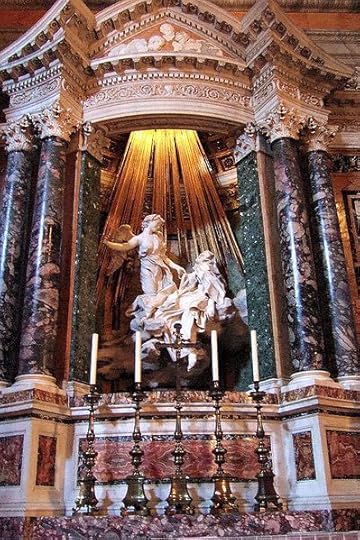
The Ecstasy of st. Teresa Bernini
Located above the altar of the Cornaro Chapel in Rome’s Santa Maria della Vittoria, Bernini’s The Ecstasy of St. Teresa represents an episode from the life of the saint as recorded in her spiritual autobiography. Teresa describes an angel carrying a fire-tipped spear with which he pierces her heart repeatedly, an act that sends her into a state of spiritual rapture. “The pain,” she writes, “was so severe that it made me utter several moans. The sweetness caused by this intense pain is so extreme that one cannot possibly wish it to cease, nor is one’s soul then content with anything but God.” (The Life of Saint Teresa of Ávila by herself, Chapter 29)
more... http://www.learner.org/courses/global...
 There is a wonderful discussion of this piece in The Power of Art (if possible to be watched with its companion BBC programme in DVD) by Simon Schama
There is a wonderful discussion of this piece in The Power of Art (if possible to be watched with its companion BBC programme in DVD) by Simon Schama
 What I really like about Baroque art is its use of light. The Ecstasy of St. Theresa is a good example. Here's another.
What I really like about Baroque art is its use of light. The Ecstasy of St. Theresa is a good example. Here's another.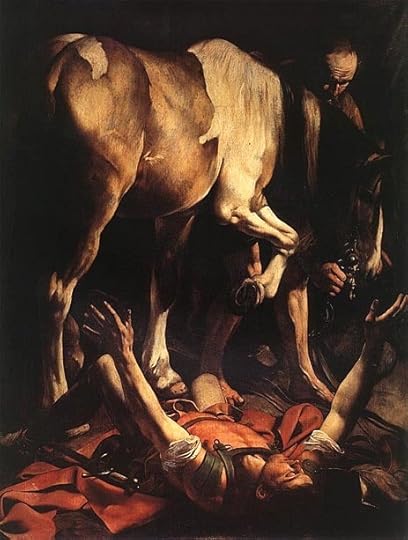
The Conversion on the Way to Damascus, by Caravaggio, 1601.
 I love Bernini. I think my favorite is Apollo and Daphne. Apollo is about to ravish Daphne, but, in utter terror, she escapes his unwanted attentions by turning into a tree.
I love Bernini. I think my favorite is Apollo and Daphne. Apollo is about to ravish Daphne, but, in utter terror, she escapes his unwanted attentions by turning into a tree.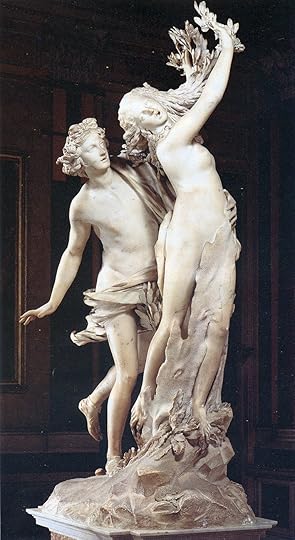

It's so detailed, it's amazing. Her toenails start to take root. Leaves sprout from her fingers.
By the way, he used studio assistants to do some of the work. One of his assistants complained he did not get enough credit and went public with his complaints.
 For me it has always been his David. He's captured so well the action and force of his movements.
For me it has always been his David. He's captured so well the action and force of his movements.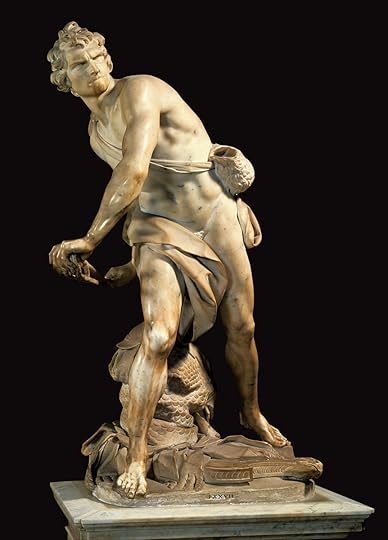
[image error]
 David is powerful, absolutely beautiful. Look at the determined expression on his face, the acute lining of his musculature, the 'moment' of impact. Gorgeous.
David is powerful, absolutely beautiful. Look at the determined expression on his face, the acute lining of his musculature, the 'moment' of impact. Gorgeous. @Ruth Caravaggio is amazing. His chiaroscuro has a great impact on the subjects of his paintings. It brings more emotion than just a picture. It can be dark with carefully placed lighting that plays into it's power.
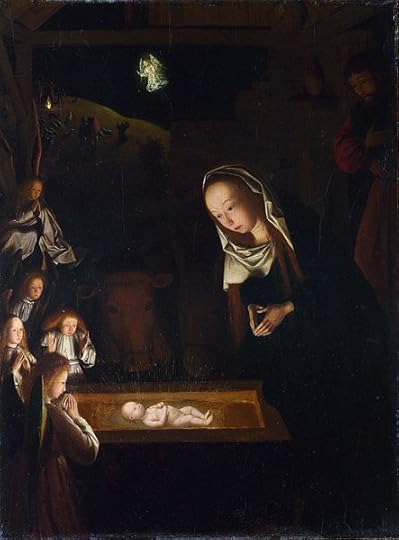
Geertgen tot Sint Jans Nativity at Night
Observe the potent lighting of Mary's face, the shepherds gazing at the child and even the distant angel in the back. Punctual emphasis on the importance of the light of Christ.



Baroque Art
The Baroque is a period of artistic style that used exaggerated motion and clear, easily interpreted detail to produce drama, tension, exuberance, and grandeur in sculpture, painting, architecture, literature, dance, and music. The style started around 1600 in Rome, Italy and spread to most of Europe.
The popularity and success of the Baroque style was encouraged by the Roman Catholic Church, which had decided at the time of the Council of Trent, in response to the Protestant Reformation, that the arts should communicate religious themes in direct and emotional involvement. The aristocracy also saw the dramatic style of Baroque architecture and art as a means of impressing visitors and expressing triumphant power and control. Baroque palaces are built around an entrance of courts, grand staircases and reception rooms of sequentially increasing opulence.
http://en.wikipedia.org/wiki/Baroque